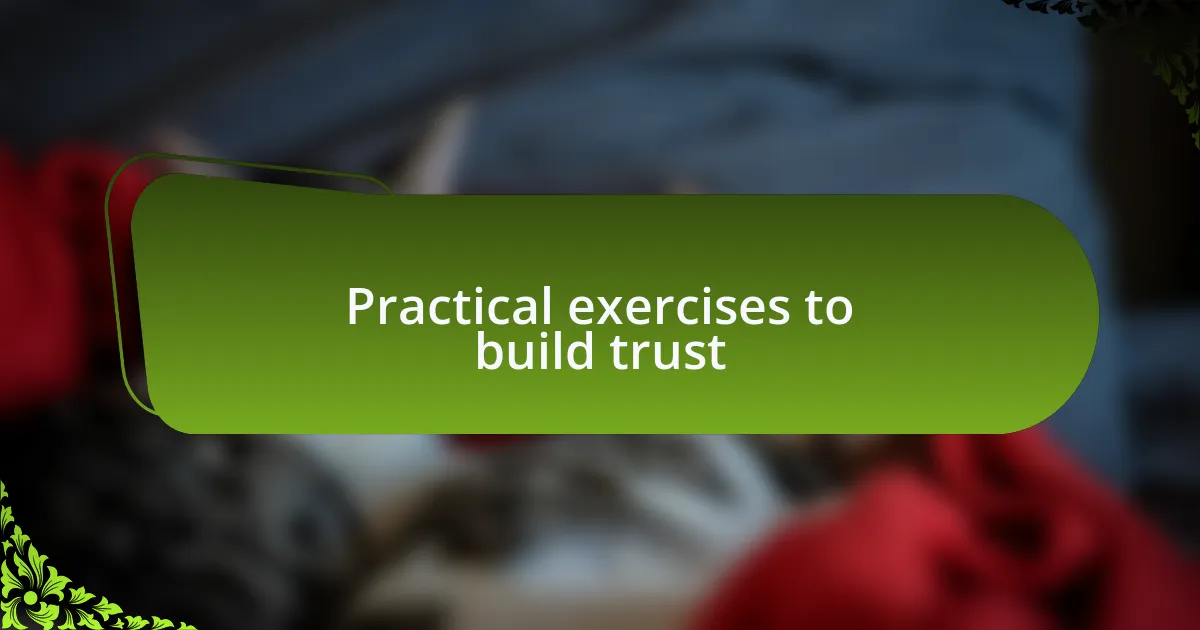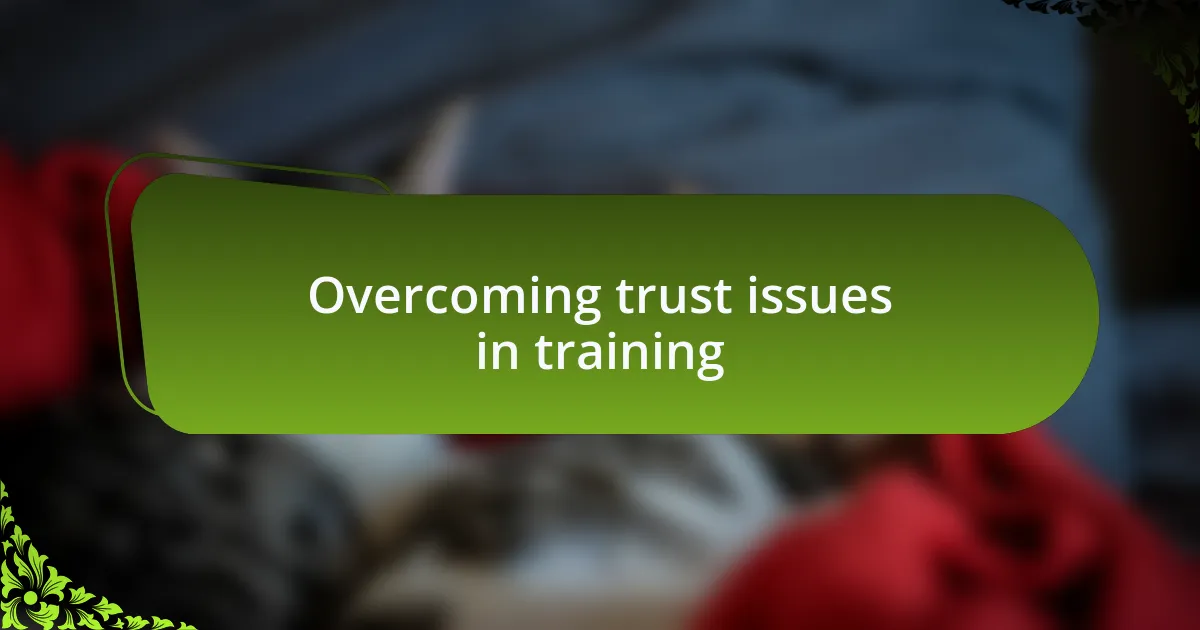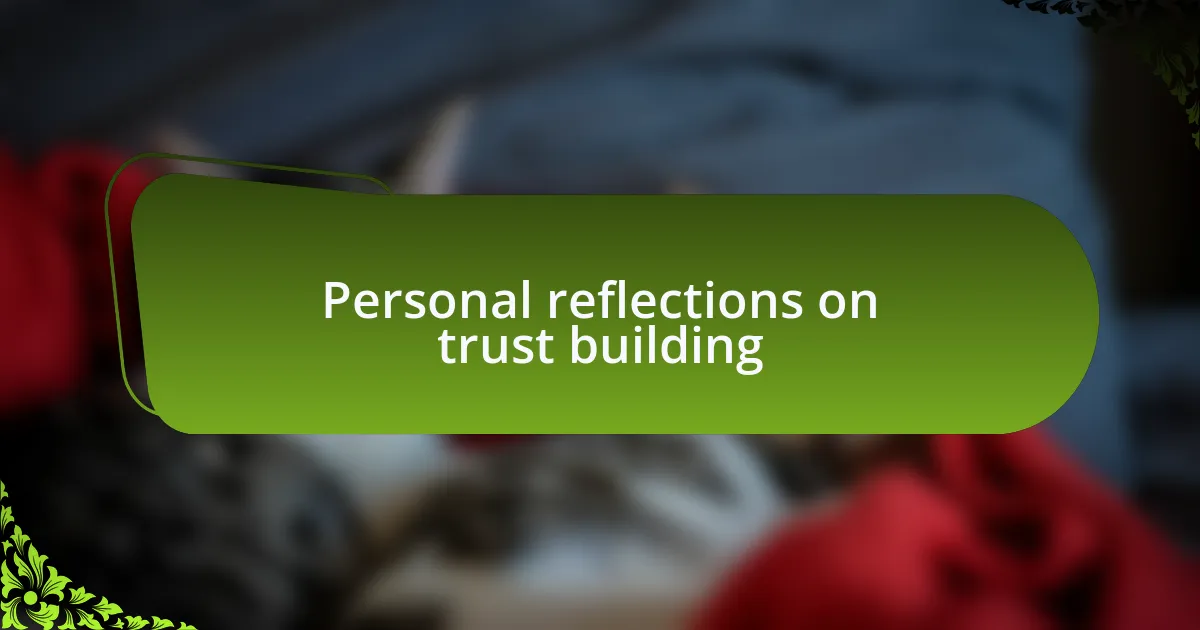Key takeaways:
- Building trust with horses requires patience, understanding, and respect for their boundaries.
- Positive reinforcement and consistency in training help overcome trust issues and establish a sense of security.
- Emotional state and body language of the handler significantly influence the horse’s responsiveness and trust development.
- Trust-building is often a gradual process marked by small, significant moments of connection between horse and human.

Understanding trust with horses
Building trust with horses is a nuanced process that requires patience and understanding. I remember when I first started working with a particularly skittish mare. She would flinch at the slightest movement, and it dawned on me that her trust needed to be earned step by step. What does trust look like in the horse-human dynamic? It’s about establishing a safe space where the horse feels neither threatened nor pressured.
As I spent more time with her, I learned that building trust often involves respecting the horse’s boundaries. One afternoon, I simply sat near her paddock and read a book, allowing her to approach me on her own terms. I could feel my heart racing as she took a tentative step forward, and in that moment, I realized trust isn’t just about techniques; it’s also deeply emotional. Isn’t it fascinating how horses can reflect our own demeanor? If we approach them calmly and confidently, they often mirror that energy back to us.
Understanding trust also means recognizing that each horse is unique, with its own history and temperament. There was a time I worked with a young gelding who had been mishandled in the past. Gaining his trust took real effort, but as I learned to read his body language, I found that even small victories—like a softening eye or relaxed posture—were monumental. I believe every interaction is a chance to reinforce that bond, as trust isn’t built in a single moment but through countless little exchanges.

Practical exercises to build trust
Practical exercises to build trust can be as simple as ground work. I recall a session where I set up a series of poles on the ground to encourage my horse to navigate them at a slow pace. By rewarding her with gentle praise and treats whenever she successfully stepped over one, I noticed her confidence growing. It’s a beautiful thing to witness, isn’t it? With each small success, it felt like we were both learning to rely on one another.
Another effective exercise is to incorporate leading from various positions. I remember the first time I led my horse while walking beside her, rather than in front. Initially, she was hesitant, often looking back at me. However, as I focused on my body language—keeping it open and inviting—she gradually trusted my lead. How enlightening it is to realize that trust can be built through simple shifts in our approach.
Lastly, positive reinforcement plays a crucial role. During my time with a particularly nervous filly, I discovered that gently rubbing her favorite spot—not forcing interactions—made a world of difference. Over time, those moments turned into trust-rich interactions where the filly sought me out rather than shying away. Isn’t it incredible how something as small as a touch can significantly impact our connection?

Overcoming trust issues in training
Building trust during training often means addressing the subtle fears that your horse carries. I once worked with an older mare who was exceptionally defensive about her hindquarters. Instead of pushing her through the discomfort, I spent several sessions simply standing beside her, offering a voice and gentle pets, allowing her to feel safe. Watching her relax over time was a profound reminder of how patience can be just as important as any training exercise.
It’s also essential to recognize your own emotions during training. I remember a day when I was feeling anxious before a session, and my horse mirrored that tension. It struck me then how my energy directly affected her responsiveness. Shifting my mindset to one of calmness helped not only me but also built an invaluable connection between us. Have you ever noticed how your horse reacts to your emotional state? It’s a powerful realization that can transform training dynamics.
Lastly, establishing a consistent routine creates a sense of security. I had a spirited gelding who thrived on predictability; he seemed to trust me more when he knew what to expect. Incorporating some light stretches and groundwork into our daily regimen made our sessions feel safe and enjoyable for him. Isn’t it fascinating how a simple structured approach can pave the way for deeper trust?

Personal reflections on trust building
There’s something truly special about the moments when a horse chooses to trust you. I recall the first time a young filly nuzzled my hand instead of shying away. It was a quiet afternoon, and I had simply sat on the ground, allowing her to approach at her own pace. That moment of connection was a gentle reminder that trust is built in the most unassuming ways.
In my experience, it often feels like trust-building is a dance rather than a straight path. Take, for instance, a thoroughbred I worked with who would bolt at the slightest sound. Each day, I would introduce a new stimulus gradually, pausing often to let him process. I found that the more I listened to his need for space and time, the more he softened to my presence. Have you ever felt like a horse was teaching you just as much as you were teaching them?
Reflecting on these interactions, it’s evident that trust is a two-way street. I learned that when I let my guard down, it encouraged my horse to do the same. One day, after weeks of gradual work, my horse walked up to me first, a small gesture but monumental in our journey together. It’s these fleeting moments that reaffirm my belief in the power of trust—do you see how impactful these connections can be?